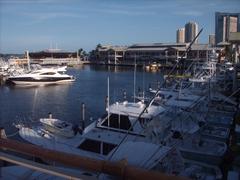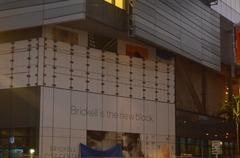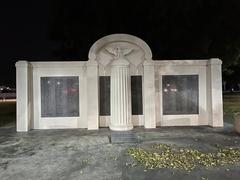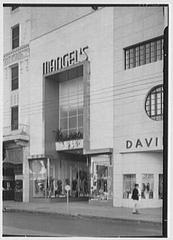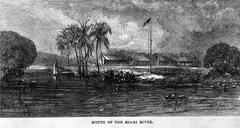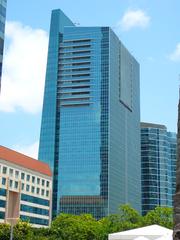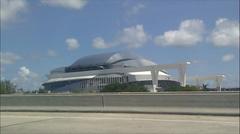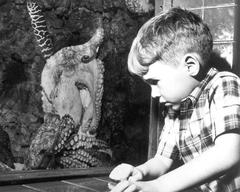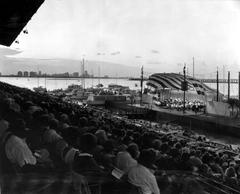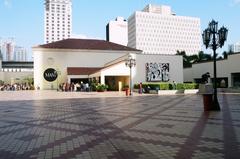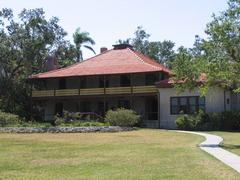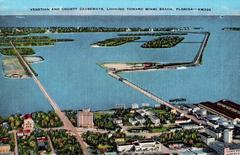Lummus Park Historic District Miami: Visiting Hours, Tickets, and Historical Sites Guide
Date: 03/07/2025
Introduction to Lummus Park Historic District, Miami
The Lummus Park Historic District stands as a vibrant testament to Miami’s layered heritage, offering visitors a unique blend of cultural, architectural, and social history. Located just west of downtown Miami, the district encompasses rare 19th-century landmarks such as the Fort Dallas Longhouse—one of the city’s oldest surviving structures—alongside a diverse array of early 20th-century architecture, including Frame Vernacular, Mediterranean Revival, and Art Deco styles (Hidden History Miami; Bailly Lectures). The district’s story is one of transformation: from indigenous Tequesta settlements and plantation-era economy through the trials of segregation to modern preservation and community revitalization.
Today, Lummus Park Historic District serves as both an urban green space and a cultural hub, hosting community events and guided tours that illuminate Miami’s rich and complex past (Blurentals; Exploding Travel). This guide provides comprehensive visitor information—including access details, historical context, and practical tips—ensuring a memorable and informed experience for history buffs, architecture lovers, and casual travelers alike. For the latest updates, consult the Miami-Dade Parks and Recreation Department and local heritage organizations.
Table of Contents
- Early Origins and the Plantation Era
- The Tequesta Legacy and Early Displacement
- Transformation in the Late 19th Century
- The Fort Dallas Longhouse: Preservation and Relocation
- Segregation, Social Change, and Decline
- Architectural Significance
- Cultural Impact and Evolving Narratives
- Modern Preservation and Community Engagement
- Visitor Information
- Frequently Asked Questions (FAQ)
- Additional Miami Historical Sites
- Practical Tips for Visitors
- References and Further Reading
Early Origins and the Plantation Era
The district’s roots stretch back to the early 19th century, when the land along the Miami River formed part of an extensive plantation economy. In the 1830s, Colonel Richard Fitzpatrick established a large slave plantation here, cultivating crops such as sugar. Upon his death, his nephew William F. English inherited the 640-acre estate, which became one of the most significant antebellum plantations in the region (Hidden History Miami). The plantation was worked by about 100 enslaved Africans and featured a substantial stone homestead and the Fort Dallas Longhouse, which originally served as slave quarters.
The Tequesta Legacy and Early Displacement
Before the plantation era, this land was home to the Tequesta, one of South Florida’s earliest indigenous groups. The Miami River area was dotted with Tequesta burial mounds and settlements, many of which were destroyed as settlers arrived. Notably, the construction of Henry Flagler’s Royal Palm Hotel in the late 19th century led to the leveling of a major Tequesta mound, an act emblematic of the disregard for indigenous heritage during Miami’s rapid development (Hidden History Miami).
Transformation in the Late 19th Century
By the late 1800s, the plantation era faded, and new visions took shape. Julia Tuttle acquired the former English plantation and, living in its stone homestead, played a pivotal role in Miami’s founding. Her successful negotiations with Henry Flagler brought the Florida East Coast Railway to the area, leading to the city’s incorporation in 1896. The arrival of the railroad and the opening of the Royal Palm Hotel in 1897 marked Miami’s emergence as a modern urban center (Hidden History Miami).
The Fort Dallas Longhouse: Preservation and Relocation
The Fort Dallas Longhouse, constructed in the 1840s by enslaved laborers, is one of Miami’s oldest existing buildings. Threatened by demolition in the 1920s, the longhouse became the focus of Miami’s first historic preservation campaign. The Miami Women’s Club and the Daughters of the American Revolution raised funds to save the building, which was dismantled and relocated upriver to Lummus Park in 1925—with support from prominent figures like William Jennings Bryan. This successful effort, while initially celebrating the structure’s use as military barracks, has since evolved to acknowledge its origins as slave quarters (Hidden History Miami).
Segregation, Social Change, and Decline
During much of the 20th century, Lummus Park reflected the city’s racial divisions. The park was off-limits to African Americans, while nearby Overtown became the center of Miami’s Black community (Hidden History Miami). The construction of Interstate 95 in the 1970s physically separated the district from downtown, leading to neighborhood decline, increased crime, and neglect of the historic buildings. By the 1980s, many structures—including the longhouse—suffered from vandalism and abandonment.
Architectural Significance
Lummus Park Historic District preserves rare examples of mid-19th-century stone construction, such as the Fort Dallas Longhouse built from native oolitic limestone. The district also features the Wagner Homestead (circa 1857), Frame Vernacular cottages, Mediterranean Revival, and Art Deco buildings, all contributing to Miami’s architectural diversity (Bailly Lectures). The Scottish Rite Temple, designed by Kiehnel and Elliot, stands as another highlight, blending Mediterranean Revival and Masonry Vernacular styles.
Cultural Impact and Evolving Narratives
The district’s history encapsulates Miami’s complex past—from indigenous displacement and slavery to urban growth, segregation, and preservation. Recent efforts have focused on acknowledging the longhouse’s true origins and the stories of the enslaved people who built it, fostering a more inclusive historical narrative (Hidden History Miami).
Modern Preservation and Community Engagement
In recent decades, renewed preservation efforts have helped protect the district’s historic assets. Fencing and enhanced security safeguard landmarks like the Wagner Homestead and Fort Dallas Longhouse. Community groups and historians continue to advocate for inclusive storytelling that recognizes all facets of the district’s legacy (Hidden History Miami).
Visitor Information
Hours, Tickets & Accessibility
- Hours: Lummus Park Historic District is open daily from 6:00 AM to 11:00 PM (Miami-Dade Parks), with some sources noting 6:00 AM to 10:00 PM for park access (Bailly Lectures).
- Tickets: Entry is free. Certain special events or guided tours may require tickets—check with Miami-Dade Parks or local tour operators.
- Accessibility: The park provides wheelchair-accessible pathways; some historic buildings may have limited access due to preservation needs.
Guided Tours and Events
- Guided walking tours are available through local organizations, such as the Miami Design Preservation League. These tours highlight the district’s history, architecture, and cultural significance (Blurentals; Exploding Travel).
- Seasonal events, festivals, and educational programs are held throughout the year.
Getting There & Parking
- The district is easily accessible from downtown Miami by public transit, bike, or car.
- Parking is limited; early arrival is recommended (Commonwealth Miami).
- For public transportation, Metrobus and Metrorail stations are nearby (Wikipedia).
Amenities
- Restrooms, water fountains, and ADA-compliant benches are available.
- Playgrounds, sports courts, and open lawns offer recreational opportunities.
- The park is patrolled by city police and includes a mounted patrol unit (Wikipedia).
Frequently Asked Questions (FAQ)
Q: What are the visiting hours for Lummus Park Historic District?
A: Lummus Park is open daily from 6:00 AM to 11:00 PM (some sources note 10:00 PM).
Q: Is there an entrance fee or ticket required?
A: No, entry is free. Tickets may be required for special tours or events.
Q: Are guided tours available?
A: Yes, several local organizations offer guided walking tours. Self-guided tours are always possible.
Q: Is the district wheelchair accessible?
A: Most park areas are accessible, though some historic sidewalks and buildings may pose challenges.
Q: Is parking available?
A: Limited parking is available nearby; public transit or rideshares are recommended during peak times.
Q: Are pets allowed?
A: Yes, pets are welcome but must be leashed.
Additional Miami Historical Sites
While exploring Lummus Park Historic District, consider visiting these nearby historical landmarks:
- Freedom Tower: Iconic symbol of Cuban immigration.
- Vizcaya Museum and Gardens: Stunning Renaissance-style estate.
- Ancient Spanish Monastery: One of the Western Hemisphere’s oldest buildings.
- Miami Riverwalk and Overtown Historic District: Rich in cultural and architectural history.
Practical Tips for Visitors
- Arrive Early: To secure parking and enjoy a quieter experience.
- Dress Comfortably: Lightweight, breathable clothing and sun protection are recommended.
- Stay Hydrated: Bring a reusable water bottle.
- Respect the Site: Many buildings are private or closed to the public; observe signs and avoid trespassing.
- Weather Awareness: Miami’s weather can shift rapidly; check forecasts and be prepared for rain.
- Accessibility Needs: Contact the City of Miami Parks Department in advance for specific accommodations.
Visual Gallery
Image 1: Frame Vernacular house in the district – alt text: “Historic Frame Vernacular home in Lummus Park Historic District, Miami”
Image 2: Lummus Park green space with mature palm trees – alt text: “Public green space in Lummus Park with palm trees”
Image 3: Scottish Rite Temple exterior – alt text: “Scottish Rite Temple’s Mediterranean Revival architecture in Miami”
References and Further Reading
- Hidden History Miami – The Plantation Slave Quarters
- Miami-Dade Parks and Recreation Official Website
- Miami Historical Society
- Exploding Travel – Lummus Park Historic District
- Bailly Lectures – National Register of Historic Places Documentation
- Blurentals – Lummus Park in Miami
- Wikipedia – Lummus Park Historic District
- Commonwealth Miami – Park Guide
- TripSavvy – Lummus Park Guide
- Florida Visiting – Places: Lummus Park
Conclusion
Visiting the Lummus Park Historic District offers an in-depth look into Miami’s rich and complex past, from its indigenous roots and plantation history to its evolution as a dynamic urban center. The district’s unique architectural variety, accessible green spaces, and community-driven events make it an essential destination for anyone interested in Miami’s cultural and historical tapestry. Whether you choose to explore on your own or join a guided tour, you’ll discover a living legacy where history and modern life intersect.
Download the Audiala app for self-guided tours and event updates, and follow us on social media for the latest news and stories on Miami’s historical sites.


